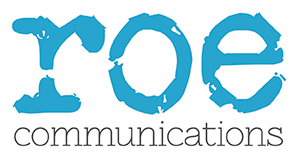Ever envy those business schools that always seem to be in the media while your emails to journalists play hide and seek?
Getting media coverage isn’t easy, but there are big benefits. Creating a positive profile in the right outlets makes all your other marketing goals easier – from recruiting students to attracting new funding, partners and faculty.
In our experience, business schools that get the best results follow similar best practices.
Here are three to get you started:
1. They know their “why?”
PR for PR’s sake is a surefire route to wasted time and effort.
Believing that you ‘ought’ to be in the media or getting sidetracked by vanity projects will result in coverage with very little value.
The most effective business schools align their PR activities with their strategic objectives, for example:
- Is their school looking to attract new students from international markets?
- Is it trying to sell more executive education programmes to companies?
- Is it trying to become known for a particular specialism (e.g. AI or sustainability)?
Getting clarity means they can focus all activities on supporting the school’s ambitions. It also helps them measure and evaluate their programme and motivate teams behind a common purpose.
Critically, it also enables them to say “no” to internal colleagues who want to push projects that don’t support their overall objectives.
2. They make journalists’ jobs easier.
Before firing off emails to journalists, successful business schools take time to understand what it’s like for them.
Reporters are incredibly busy and time-poor. They are also inundated with pitches. As a result, the bar for securing media coverage is high.
Journalists won’t write self-promoting stories. Many are driven by the wider news agenda, and most are under pressure to generate reader traffic. They do not have time for non-stories or timewasters.
Against this backdrop, business schools who excel at PR:
- Build a prior relationship before launching into their pitch (see below)
- Ensure that their pitches are relevant to the journalist’s audience.
- Only pitch newsworthy stories (see HERE for a checklist)
- Don’t hassle for an answer.
- Figure out the best time to pitch – not on a deadline, for example.
- Don’t confuse them with technical jargon.
- Have spokespeople, photos, facts and figures ready to go.
3. They build relationships and constantly scan for opportunities.
Relationships matter, especially in the media game.
Treat journalists like acquaintances at a networking event – no instant sales pitch. Invest time, understand their needs, and show how you can solve their problems.
Whilst journalists are time-pressed, most understand that organisations are useful resources for sourcing stories. And whilst the days of long journalist lunches are long gone, many journalists are still open to expanding their contact books, especially as business schools have access to expert spokespeople, research and exclusives.
Business schools with the strongest reputations put in significant work to research journalists’ interests and build relationships with them. They also put time into developing a continuous awareness of what is happening in their target media outlets – new joiners and movers, new columns and opportunities for coverage.
At the same time, they stay on top of the news agenda to match their stories and spokespeople with the breaking issues of the day.
If you want to improve your business school’s media coverage in 2024, we can help! Click HERE for details of our proven PR programmes or call us!


